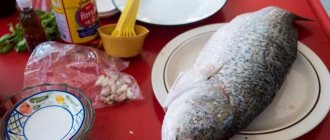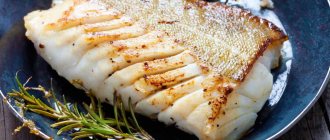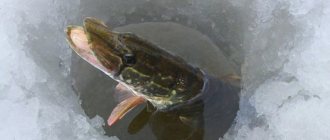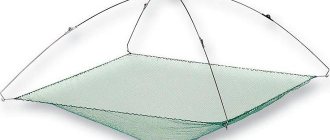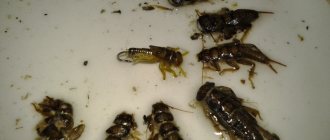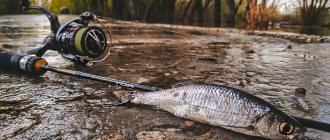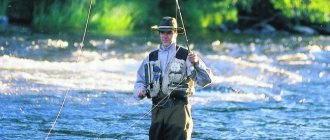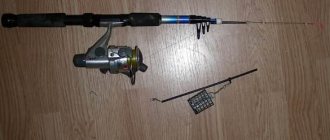Is late autumn almost early winter? Not so: recently our climate has warmed up so much that we already have to get used to the new reality - and in terms of weather, December is increasingly reminiscent of the last month of autumn. This means that in other years the autumn off-season can last as long as 60 days. And what should fans of float and feeder fishing do at this time? Sitting at home and being bored? Personally, I can’t go that long without fishing. And that’s why, whining to myself about the winter lost in God knows where, I go with my favorite gear to the shore of some body of water to thoroughly enjoy thoughtful and leisurely late-autumn fishing.
One of the main questions that I try to think about even before I start fishing is what and how much I will feed the fish. I confess honestly, this choice is difficult, and a small miscalculation in the composition or quantity of bait can be the cause of a complete fishing fiasco. Now I want to share with you my experience, as well as feeding methods, which, in my opinion, are the best solutions during this difficult time of year for fishing.
Or maybe not feed the fish at all?
Many of my colleagues in late autumn completely refuse bait or prefer to lure fish to the fishing point with clean sand. The logic of their reasoning is approximately as follows: since the fish practically do not feed at this time of year, they should not be overfed with bait.
It is much more effective to walk along the shore and look for points where fish have gathered in a school. And to mark the point where the hook with the nozzle is located, you can pour a handful of sand into the water. And you know, this simple trick sometimes works. But only if the main fish in the catch is bleak or small roach.
For the rest of the fish, river sand as bait turns out to be completely useless. As an experiment, I even flavored the sand with flavoring - the effect was zero. The result appeared when semolina or Hercules ground in a coffee grinder was added to the sand. But then the soil had to be considered as ballast.
However, let’s return to the second part of the technique described above, namely the active search for fish sites. In late autumn, when 90% of all fish living in a reservoir concentrate on 10% of its area, a skillful search for these sites is most effective. And at a well-chosen point, you will still see several bites without any feeding. But a float or bottom fishing rod is not a spinning rod, where the bait moves actively, and a roach or bream is not a perch that instinctively reacts to movement. And as soon as the unhooked members of the flock sense a catch, the bites will stop.
Only competition for food can renew the fish's interest in the bait, which correctly supplied bait helps to stimulate. So you need to feed the fish even in late autumn. Only this should be done extremely carefully.
Bait options
One of the best food for fish in the fall is bloodworms. Moreover, this is the most affordable option. But a bad bloodworm may not even attract fish. Therefore, try to choose only dark larvae. Yes, they are not at all attractive in appearance, but they hold up well on the tackle. I noticed that the dark bloodworm lives even longer and actively attracts fish. And this is very important if you are fishing at shallow depths.
- Interesting! If you come across a small green larva among the standard red bloodworms, you should not throw it away; I usually use it as food for roaches.
You can also use other types of bait.
- Maggot. Perfect for autumn fishing. Firstly, maggot larvae are tenacious. Secondly, they do not have any unpleasant aroma. Thirdly, the fish will never resist a plump maggot. What color maggots are best for fishing? I can’t say for sure, you need to test everything yourself.
- Caddisfly. Sometimes in reservoirs with clean running water it happens that neither maggots nor bloodworms attract the inhabitants. In these situations I simply use a caddis fly.
Using such simple but at the same time useful recommendations for fishing in the autumn in Sazanya Bay, you will definitely catch the desired trophy!
TAGS:
What bait to use
This is a strategic issue that the angler should decide before fishing begins. And again, the conflict comes between the fish’s low metabolism in cold water, plus its natural caution on the one hand, and the angler’s habit of fishing in the summer, on the other. It was at this stage of preparation for fishing that I hit the greatest number of bumps. And the main problem was precisely my habit of feeding fish in the summer. Over the course of several summer months, a stable pattern is developed to use a specific composition of dry bait mixture as bait. In autumn, the food activity of fish quickly declines, and the pattern continues to work on a subconscious level.
The realization that I was doing something wrong most often came to me after several unsuccessful fishing trips. The most significant mistakes at this stage were incorrectly selected: the composition of the bait, the size of the fraction of feed particles, the color of the bait mixture, its inertness and smell. Moreover, all these errors, except for color and smell, were impossible to correct promptly.
Many fishermen rarely pay attention to the composition of bait. But in vain. If the bait is too nutritious and contains a large amount of biscuits, in the fall it will simply quickly saturate the fish even before it gets to the hook with the bait. Too poor bait mixtures, which contain a large amount of ground bran, are also not suitable. They work like sand - and are completely uninteresting for large fish.
For this time of year, it is precisely balanced, weakly nutritious bait mixtures that are needed. Having worked with different manufacturers of bait, both Russian and foreign, I made a sensational discovery for myself: only a few varieties of bait marked “for cold water” or “winter” can be considered corresponding to the stated purpose. Everything else is a cunning advertising gimmick. Of the domestic bait mixtures, I really liked the Minenko bait of the Cool Water series (photo 1) and the “Optimist” bait of the Elite series (but not all of them, only “Black Roach” and “Black Bream”).
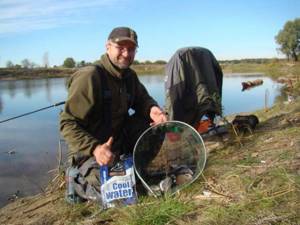
Photo 1
Of the foreign baits, most often in the fall I use Sensas 3000 of the Gardons series (photo 2) and Sensas 3000 of the Matsn series. I also liked VDE bait, but recently it has disappeared from store shelves. All of the above baits work very well for capricious, sedentary fish.
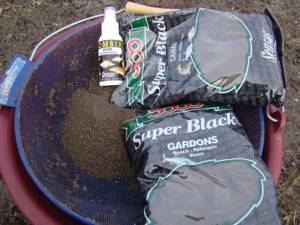
Photo 2
Another “Trojan horse” in the composition of baits for late autumn is the size of feed particles. Logically, if the fish has a poor appetite, it turns out that the smaller the fraction of feed particles, the less they will saturate the fish. But it's not that simple. For example, the same roach or bream in late autumn willingly eat the crumb of white bread or rye bread dough, provided that the feeding is carried out with the same bread or dough.
To call such bait fine-grained is hard to come by. What then to do with the above list? After all, almost all baits in it are small-fraction. And everything is elementary. The principle: what we feed, we catch, has not yet been canceled. And all finely dispersed dry bait mixtures represent a base for increasing the attractiveness of the same bloodworms, maggots, casters or pieces of worms. Without the “little animal” such baits work poorly. I'll say more.
Previously, for faster delivery of white bread soaked in water or pellets of brown bread dough, I used clean soil. Now I like the French Sensas 3000 groundbaits of the Matcn series as ballast more. Balls from moistened bait are molded much easier than from wet sand, and the fish are more willing to stand up for such a treat than on the ground with pieces of bread.
If you do not have the opportunity to buy the above dry bait mixtures, do not worry. You can sift any summer bait through a fine sieve and add a little dark soil to it: best of all is soil taken from under deciduous trees. In combination with an animal element (photo 3) or pieces of bread, this bait also works very well.
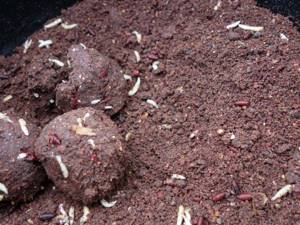
Photo 3
Regarding the optimal inertness of ready-made bait for late autumn, not everything is clear either. And it would be absolutely wrong to give any specific advice. It seems that in cold water inert bait should be a better option, but not always. It all depends on the mood of the fish - and every time you have to adapt to it. At home I try to prepare a light bait mixture, but well soaked in water, and when I go to a pond I take with me about a glass of dry bait mixture and about a liter of dry soil. Suddenly the bait mechanics will have to be adjusted.
But the influence of the color and smell of the finished bait on the activity and number of bites is secondary. You've probably noticed that most of the baits on my list are dark. Yes, for autumn fishing I love dark baits, but I also know people who don’t think about the color of the prepared bait mixture at all - and fish well with what they can buy in the store. And if it is really necessary, then darken the bait with earth.
I experimented a lot with smells, and as a result I came to the conclusion that there would be bait with fruity or coriander notes in the aroma - there is not much difference. I have had the opportunity to fish quite successfully with carp bait mixtures that have a fruity smell. The only thing you should definitely avoid in the fall is strong odors.
Autumn bait recipes
An experienced fisherman can prepare bait for autumn fishing on his own. To do this, you need to mix oatmeal with breadcrumbs. Then add traditional salt and sugar. The resulting composition must be well diluted with earth or sand and kneaded well until smooth.
The final touch to this bait will be bloodworms. It will give it the desired aroma, which will make the fish react more actively. Also, maggot, which also has the necessary properties, is perfect for this purpose this season. You can mix both of these ingredients in one complementary food.
The already prepared bait should be rolled into tight balls. They will help you dose the amount of complementary foods and not overfeed the fish. It will be good if there is a sufficient amount of bloodworms in the composition - large fish react very well to it.
Among other things, you need to take into account that purely vegetable baits do not work during this period of the year. They will not improve the bite even if you have suitable bait.
How to feed
Let's move on from strategy to tactics. On late-autumn fishing trips, I developed one universal rule for myself regarding the amount of food thrown into the water: the colder the water, the less food should be thrown into the water at a time, and also the less frequently supplementary feeding should be done. After numerous flights to seemingly promising points, I completely abandoned starting feedings in late autumn.
A more successful tactic was preliminary fishing of the point without any feeding at all. Maggot has proven itself very well as a scout bait. Even if further fishing is carried out with bread, dough or semolina, I make the first few trips with maggots on the hook. Any fish loves the fly larva, and if it is nearby, you will see several bites. And then you can slowly feed him.
I do this in late autumn very carefully. Having carefully measured the bottom, I find the most flat area in the fishing sector. This is necessary in order to know exactly where the bait balls are, and the bait on the hook floated as close as possible to them. Then, having molded several not very dense balls of bait the size of a tangerine (photo 4), I throw them into the water so that they lie a little closer (30 centimeters) to the float. This ensures maximum precision in feeding. In late autumn this is extremely important. The fact is that in cold water the fish will not chase even the most delicious bait if it swims at least half a meter from the feeding point.
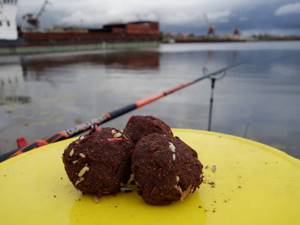
Photo 4
Usually the first bites begin 15 minutes after feeding, but even if this does not happen, you should not rush into additional feeding. Usually I wait a 30-40 minute pause and make a decision: change the fishing point or throw another ball of bait to the float. If there are no bites for a long time, the decision to change the fishing point often turns out to be more correct.
If bites have begun, you should also not try to tease the fish with an extra portion of food. You need, as the British say, to feel the pace of fishing. Reasonable moderation in autumn fishing has never failed.
Predators in autumn
Of the predators on the big river, the most active are pike perch and pike . Asp are also caught using wobblers, sometimes with rafting. pike perch are trolled in a plumb line at depth, with chopped sprat attached to a jig head or large jig. Pike can be caught using spinning rods along pit edges and along the edge of grass in deep bays. It also catches heavy baits when trolling vertically. Sometimes the method of step-by-step retrieving a heavy oscillating spoon bait at the bottom is more effective. Moreover, now the pauses are made shorter, since pike are more active in the fall. Perches sometimes react better at this time to equipment called “herringbone”, “train” and many other invented names. The essence of the equipment consists of a tandem of a heavier leading bait and leashes with hooks or small spinners. Hooks are usually equipped with cambrics, pieces of white insulation and red wool. They also use jigs with cambrics and wool. Most often, the leading bait is a heavy spinner such as a castmaster or another spinner. Winter spinners are also used.
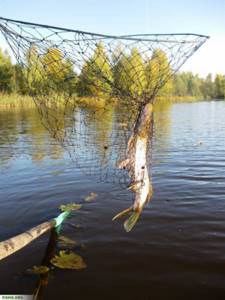
At the reservoir
On the reservoirs in the channels there is something like an autumn movement. Usually quite large roach travel along the channels. Bream can also be caught in the riverbed hole. And in the bays, sometimes the pike takes it recklessly and greedily. Moreover, in the fall it often goes out into grassy shallows, where pike grab wobblers and oscillating spoons. She will not refuse rotating spinners either. The emergence of autumn pike into coastal shallow waters is especially widespread on quiet and sunny days of the so-called “Indian summer”. Often on such fine days you can hear the fight of large pike in shallow waters. In the flood zone, where there were once forests, pike and perch are also active. They are successfully caught in these places using spinning rods. And the most catchy bait is often a white oscillating spoon, for example, a simple Atom bait.
On small rivers
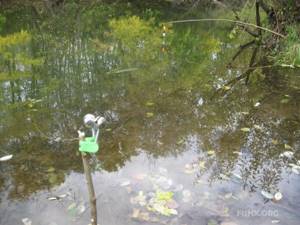
On small rivers, pike are caught on spinning rods, live bait and summer baits installed both from the shore and from a boat. This kind of fishing is convenient because you can relax your soul by catching autumn roach with a float rod near the shore grass and at the same time watch the donks and girders.
I recommend to read:
How to feed a predator
Features of choosing a place for fishing
, the nocturnal predator, burbot, begins to actively feed on small rivers It is caught on channel edges with casts and other bottoms using worms, cutting, live bait, crawlers (about catching burbot in the fall).

Share with your friends!
